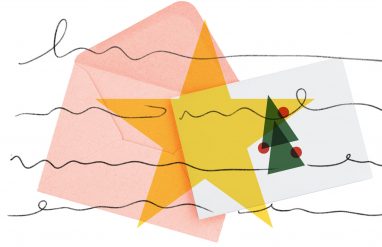What’s up with ALL CAPS?
You’re reading an email from a friend one morning, casually sipping a cup of joe, when all of a sudden, BAM. There it is. “I’ve been working WAY TOO MUCH lately, but I’m hanging in there. Dinner Friday?” Wait a minute is that— *Gasp* IT IS. AGH! ALL CAPS!
Is that how you’d react in IRL? Probably not, but for decades, conventional netiquette has advised against the use of all capital letters (all caps) when writing online with the often-cited reason that WRITING LIKE THIS comes across as “very aggressive (LIKE SHOUTING!).”
So, how did THIS become code for shouting in the first place? Should we decapitate all caps altogether, or is there a place for it in our hearts and on our screens?
Capitalization reCAP
Capital letters in Modern English derive from an Old Roman script used in the a.d. 200s. In those days, all caps was all there was! Lowercase letters hadn’t been invented yet, so capital letters were used for everything.
In an interview with The New Republic, Paul Luna, a typography and graphic communication professor, explained that people have been using all caps for thousands of years—not to shout at everyone, but to convey “grandeur,” “pomposity,” or “aesthetic seriousness.” These uppercase letters were called majuscule, which evokes their majestic functions.
Because everything was hand-written in those days, there was soon a need to write books and documents more quickly. Scribes developed a smaller, rounded script that enabled them to speed up the writing process. This script was called miniscule, kind of like a Mini-Me version of majuscule (except with several letter-shape variations).
Scribes didn’t mix majuscule and miniscule at first, but they realized that capital letters attracted the eye. So, they used ornate majuscule letters in the first word on every page and to begin new paragraphs. Capital letters really “CAP”-tivated attention.
Caps get LOUD
Some might say the link between shouting and all caps wasn’t forged until the first bloggers joined the new interwebs scene in the 1980s. Actually, however, written records show that in the 1800s, writers were already associating all caps with loudness. Early 20th-century newspapers capitalized on all caps’s ability to shout headlines from the page.
But, then the internet did rise, and so too did the notion of typed all caps and yelling. In 1984, a poster on Usenet (a precursor to today’s online forums) proclaimed, “if it’s in caps i’m trying to YELL!” Another user wrote that the most popular form of emphasis online was “using CAPITAL LETTERS to make words look ‘louder.’”
Typographical diagnosis: loud and hard to read
Aside from the shouting effect, there are some other reasons why we don’t use all caps in everyday writing. If only capital letters are used in a piece of writing, nuance is lost. Numerous studies conducted over the decades (since as early as 1914) also suggest that text written in all capitals takes more time and effort to read than text in standard sentence case. That’s because people recognize words more easily by their contours. Lowercase words show the highs and lows of letter-extenders (like d and p). Words in all caps have a uniform rectangular shape.
In large part due to these reasons, a few professional institutions that traditionally communicated in all capital letters, like the National Weather Service and the Navy, are bidding all caps farewell. But, should we all? NO.
How to captivatingly use all caps
All caps certainly has a place in writing today—and it has many defenders, particularly young people and those who think netiquette is old news.
So, while contentious, all caps has its uses. No, you don’t want to write your thesis in all caps. You probably don’t want to write a full paragraph in all caps, either; but in informal communications—especially ones with friends—all caps is your friend.
Keep all caps casual. Don’t throw it around willy-nilly, and try to dissuade it from rearing its excitable head in formal writing. Use italics or bold to provide a more mature emphasis; a restrained significance that says, “Yes, I’m distinguished, but I don’t need to brag about it.”
When an emotional outpouring of text is appropriate, all caps is a form of emphasis that joins italics and bold. When your real voice, body, and face are absent (i.e., on the internet), all caps can convey the following:
Passion: “PESTO IS MY LIFE”
Excitement: “I CAN’T WAIT!”
Excitement-bordering-on-manic-hyperventilation: “OH MY GOOOOOOD! WHAAAA?!! GET OUUUUUUT!!! I CAN’T WAIT!!!!”
Amped displeasure: “I’M SO SICK OF MEATLOAF”
Raising the volume on a word (just a smidge, not a shout): “She didn’t shower for six WEEKS.”
Emphatic gah: GAH (also AGH, BAAH, BAGH, ARGH, GRR)
Sarcasm: “Root canal? LOVE IT”
Variations on emphatic questioning: “What the hell were you THINKING?” and “What the HELL were you thinking?”












